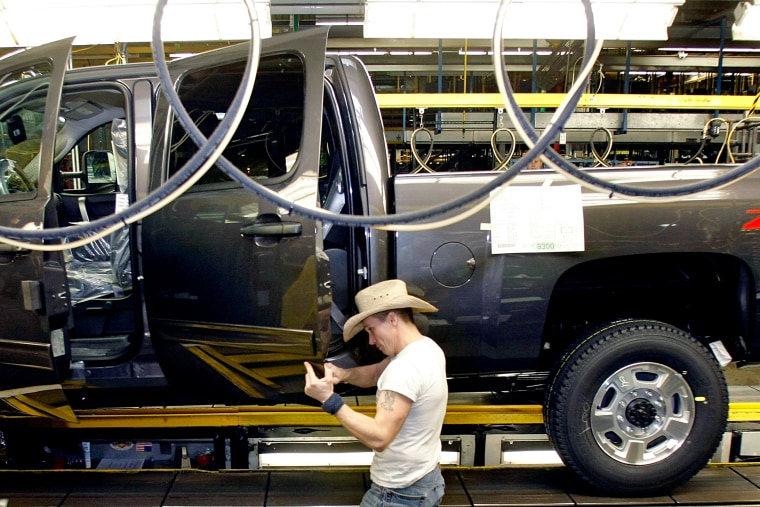General Motors will begin involuntary layoffs on Monday, hoping to complete the latest round of cutbacks before releasing its fourth-quarter earnings on Wednesday.
In all, about 4,000 workers in its North American operations will be terminated, part of a broader series of cuts expected to save the automaker billions of dollars and help it prepare for an expected slowdown of the U.S. automotive market during the next several years.
“This is not going to be like Black Friday,” one source told NBC News, referring to the massive cutback GM ordered in the run-up to its 2010 bankruptcy.
That said, the largest of the Detroit-based carmakers will, with the latest cuts, have eliminated more than 14,000 jobs in the U.S. and Canada since November.
The job reduction was part of a broader plan approved by GM's Chief Executive Officer Mary Barra that also will see three North American assembly plants and two component factories close by the end of 2019.
“This is about making sure that GM is lean and agile,” Barra said in announcing the cuts, adding that the automaker wants to trim back some of its more bloated operations in order to help it fund its aggressive push into mobility services, such as autonomous ride-sharing, as well as electrified vehicles. Barra previously outlined a “path to an all-electric future” that will begin with the launch of an all-new Cadillac battery-electric SUV in late 2020 or early 2021.
Officially, GM spokesman Pat Morrissey told CNBC that the cutbacks are coming and that they will affect 4,000 current workers.
The automaker is cutting blue-collar and white-collar staff, though many of the hourly employees will remain on the job until their factories complete the build-out of targeted models like the Chevrolet Cruze built in Lordstown, Ohio, as well as the Cadillac XTS rolling off an assembly line in Detroit.
In all, the automaker plans to eliminate six slow-selling passenger car lines that include the Cadillac flagship, the CT6 sedan, as well as its first plug-in hybrid, the Chevy Volt.
Prior to announcing the cuts, GM had hoped to reduce its workforce through voluntary buyouts offered to 17,700 employees, but the acceptance rate initially was low. Two separate sources told NBC News that the number of workers who have negotiated separation agreements has escalated in recent weeks, though GM still needs to hand out pink slips to about 4,000 employees next week to meet its target.
The cutbacks will, overall, save the company about $3 billion by the end of this year, despite the cost of the buyouts, and a total of $6 billion by the end of 2020.
GM officials have stressed that their goal is to trim back the GM organization before it faces the next recession — with many analysts predicting that U.S. car sales will begin at least a moderate decline this year after an unexpected upturn in 2018.
But the automaker has taken serious heat for the plant closings and job cuts, with Barra facing days of critical meetings on Capitol Hill, as well as excoriating tweets from President Donald Trump.
Barra and other executives have noted that not all the workers affected by the plant closings will lose their jobs. Eventually, the automaker hopes to transfer several thousand to other factories producing hot-selling SUVs, CUVs and pickups in order to help boost production.
GM isn’t the only automaker trimming back. Ford has also begun eliminating passenger car models. It announced plans for an $11 billion restructuring last October and is expected to axe as many as 25,000 jobs, though a majority of those cuts are seen targeting Europe and other financially struggling markets.
